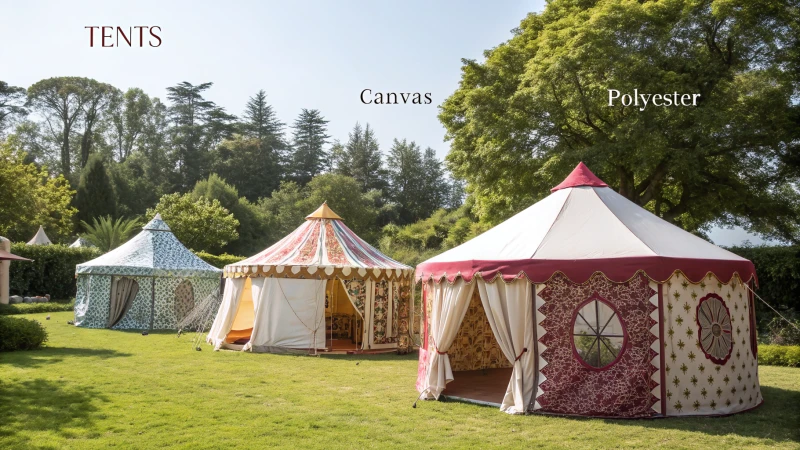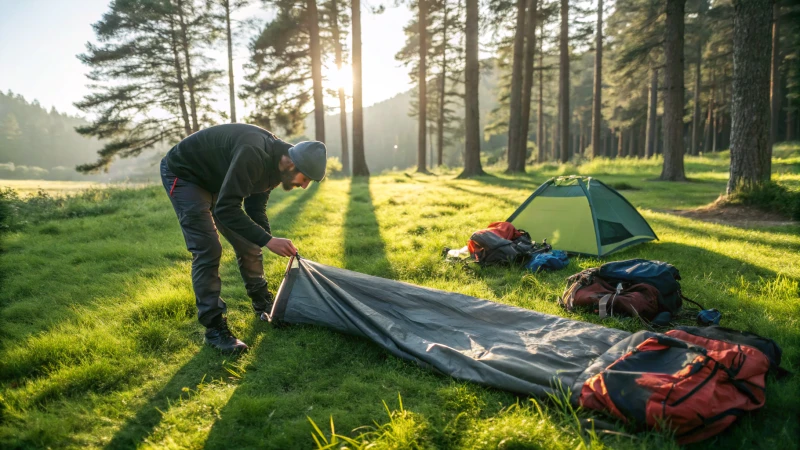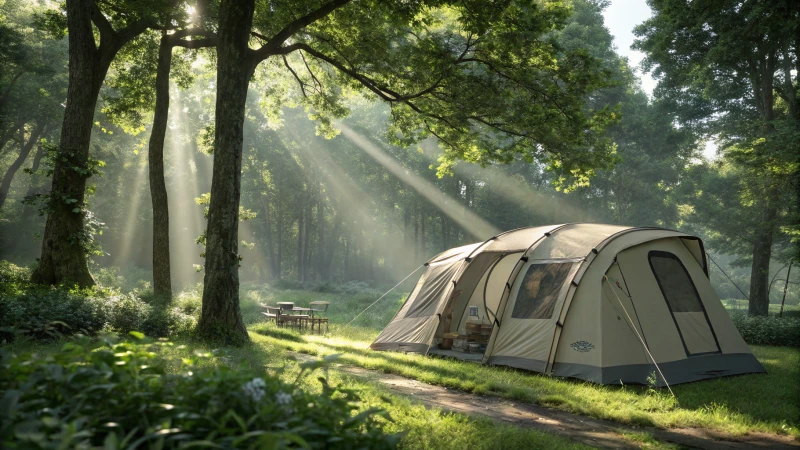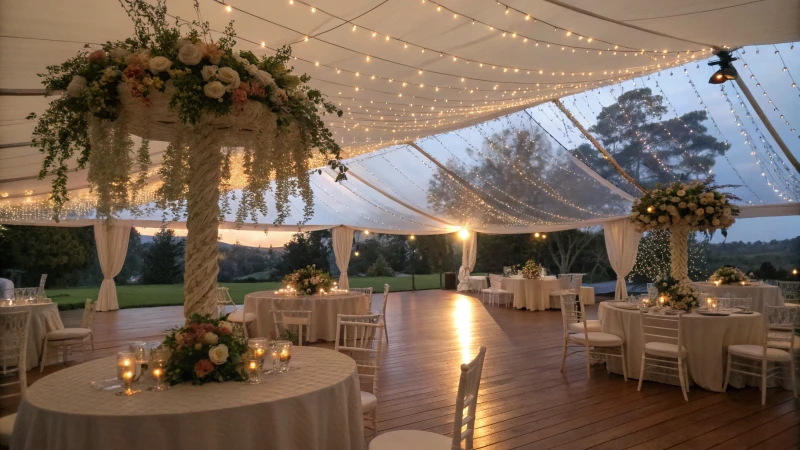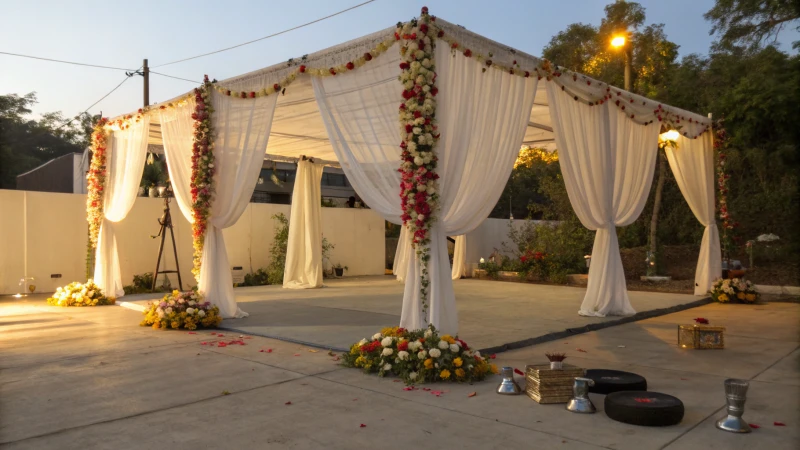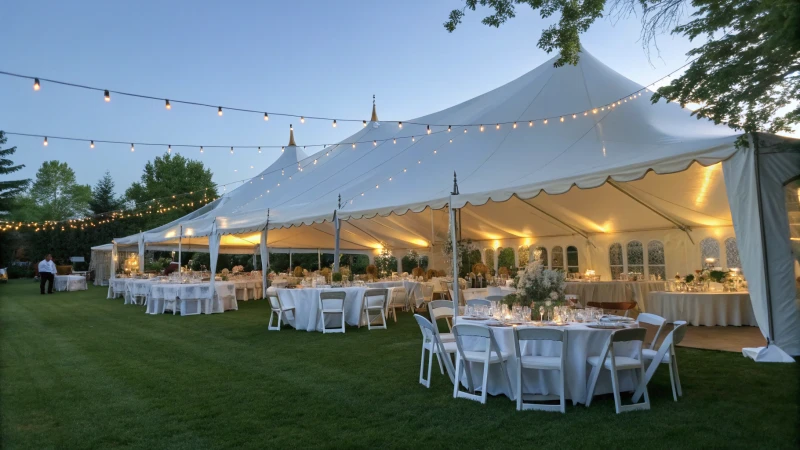
Planning a big event for 150 guests? Let’s make sure everyone’s comfortably covered!
For 150 people, a 30×50-foot tent (1,500 square feet) typically works for banquet seating, while a 20×50-foot tent (1,000 square feet) is suitable for theater-style seating. Consider larger sizes if you need a stage or dance floor.
While these measurements give us a solid foundation, personalizing your event space makes all the difference. I remember planning my own event and realizing how crucial it was to think beyond just numbers. The type of seating and extra elements like a dance floor can transform the vibe entirely. Let’s explore how these factors play into finding the perfect tent size.
A 30x50-foot tent fits 150 people banquet-style.True
A 30x50-foot tent provides enough space for banquet seating for 150.
A 20x50-foot tent is too small for theater seating for 150.False
A 20x50-foot tent can accommodate theater seating for 150.
How Does Seating Arrangement Affect Tent Size?
Ever wondered how a simple seating plan could impact the entire size of your event tent? It’s fascinating how the arrangement of tables and chairs can make or break the spaciousness of your venue.
Seating arrangements like banquet or theater style significantly influence tent size by determining the space each guest requires. Banquet-style needs more room than theater-style, affecting overall tent dimensions.
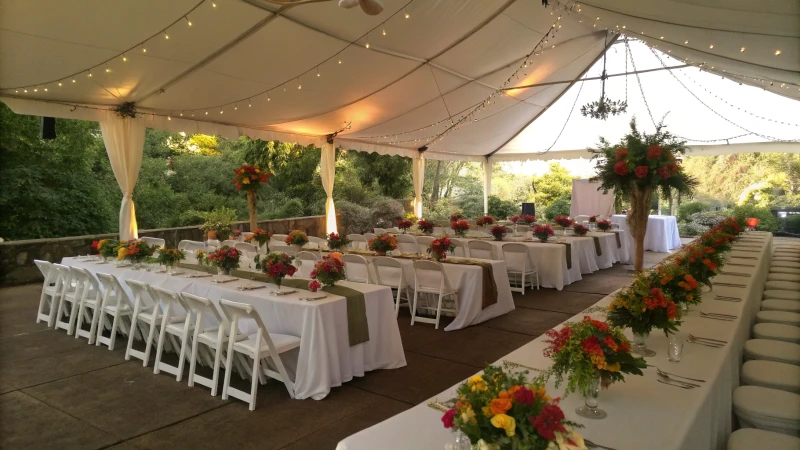
Banquet-Style Seating
Imagine you’re planning a wedding, and you’ve opted for banquet-style seating with round tables that seat 8-10 guests each. This setup not only brings people closer but also requires around 10-12 square feet per person. Picture this: for an event with 150 guests, you’re looking at needing a tent between 1,500 and 1,800 square feet. It’s like choosing to give each guest their own mini dance floor!
| Number of Guests | Square Feet Needed (10 sq ft/person) | Square Feet Needed (12 sq ft/person) |
|---|---|---|
| 150 | 1,500 | 1,800 |
Theater-Style Seating
On the flip side, think about a seminar with theater-style seating where chairs are neatly lined in rows facing the stage. This arrangement is all about maximizing space, requiring only about 6-8 square feet per person. For those same 150 guests, a tent of 900 to 1,200 square feet would do the trick. It’s like fitting more seats in a stadium without losing the view!
| Number of Guests | Square Feet Needed (6 sq ft/person) | Square Feet Needed (8 sq ft/person) |
|---|---|---|
| 150 | 900 | 1,200 |
Additional Considerations
But let’s not forget the extras! Planning to add a stage for speeches or a dance floor for those who can’t resist a boogie? You’ll need extra room. For example, adding a stage might mean tacking on an additional 200 square feet.
- Stage Size: Always estimate your stage size based on what you need for performances or presentations. A standard stage addition typically requires at least 200 extra square feet.
- Dance Floor: If you’re dreaming of twirling with 150 guests, plan for about 300 square feet dedicated to dancing.
Flexible Space Solutions
When you want it all—comfort, style, and functionality—modular or customizable tents are your best friends. They can adapt to whatever your heart desires, whether it’s banquet-style seating1 or theater-style seating2. These adaptable solutions ensure that every element of your event fits perfectly.
In the end, picking the right tent size isn’t just about numbers. It’s about envisioning the flow and feel of your event and making sure there’s room for everything—from heartfelt speeches to those unforgettable dance-offs.
Banquet seating requires 10-12 sq ft per person.True
This is true as banquet seating typically needs 10-12 square feet per person.
Theater-style seating needs more space than banquet-style.False
False, theater-style requires less space, around 6-8 sq ft per person.
Why Choose a Larger Tent?
You know that moment when you unzip your tent and feel like you’re stepping into your own cozy cabin? That’s what choosing a larger tent can offer.
A larger tent offers generous space for sleeping, storage, and activities, making it perfect for comfortably accommodating more people. Its versatile layout options enhance your camping or event experience.
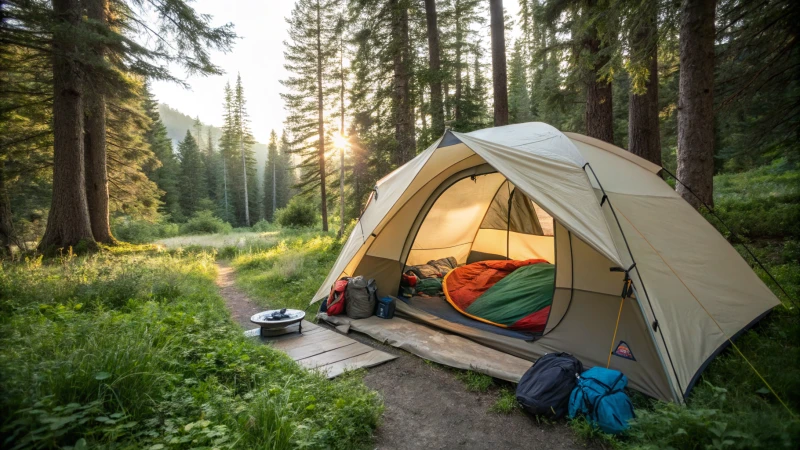
Enhanced Comfort and Space
I remember my first camping trip with a small tent. It was just me and my gear squeezed in like sardines. Then, I upgraded to a larger tent, and everything changed. Suddenly, there was room to stretch out, stash my backpack neatly, and even set up a little reading nook. A larger tent not only means more space for essentials like sleeping bags and air mattresses but also creates a much more organized, stress-free environment.
Increased Storage Capacity
Camping is fun until you realize how much gear you’ve got to fit inside your tent. On my family trips, we bring everything from cooking equipment to extra clothes. A larger tent becomes a lifesaver here, offering ample room to store our camping essentials without tripping over them every time someone moves.
Flexibility in Layout
One of the coolest things about a larger tent is how customizable it can be. Picture this: one corner set up as a dining area, another as a cozy lounge, and yet another for sleeping. This flexibility is especially handy during longer stays or when hosting large group gatherings3.
Weather Protection
On one of our trips, an unexpected storm hit. Thankfully, our larger tent, with its reinforced seams and high water-resistance rating, kept us snug and dry inside. Larger tents often boast better structural integrity and weather resistance, offering peace of mind against the elements.
Table: Comparison of Tent Sizes
| Feature | Small Tent | Large Tent |
|---|---|---|
| Sleeping Capacity | 1-2 people | 4+ people |
| Storage Space | Limited | Ample |
| Setup Flexibility | Minimal | High |
| Weather Resistance | Basic | Advanced |
| Internal Layout Options | Few | Many |
Social Interaction and Activities
There’s something magical about gathering friends or family inside a tent to play games or share meals. A larger tent provides that communal space, enhancing bonding and crafting unforgettable memories. It’s perfect for camping with friends4 or family reunions.
Versatility for Different Uses
I’ve also found larger tents to be incredibly versatile. Whether I’m planning a camping trip or hosting an outdoor party, these tents adapt easily to various needs. Multi-room tents are a great option for added functionality and can be a game-changer for events or festivals.
By weighing these benefits, you can determine if a larger tent fits your camping style and needs.
Larger tents offer better weather protection than smaller tents.True
Larger tents often have reinforced seams and higher water-resistance ratings.
A larger tent cannot accommodate separate zones for activities.False
Larger tents allow customization of internal layout, creating separate zones.
How Can You Enhance Your Tent with Additional Features?
Imagine turning your tent into a cozy haven rather than just a shelter from the elements. Here’s how you can transform your camping experience!
To add more features to your tent, consider integrating ambient lighting, efficient storage solutions, and comfort boosters like inflatable mattresses. These elements can significantly enhance your camping experience by adding convenience and warmth.
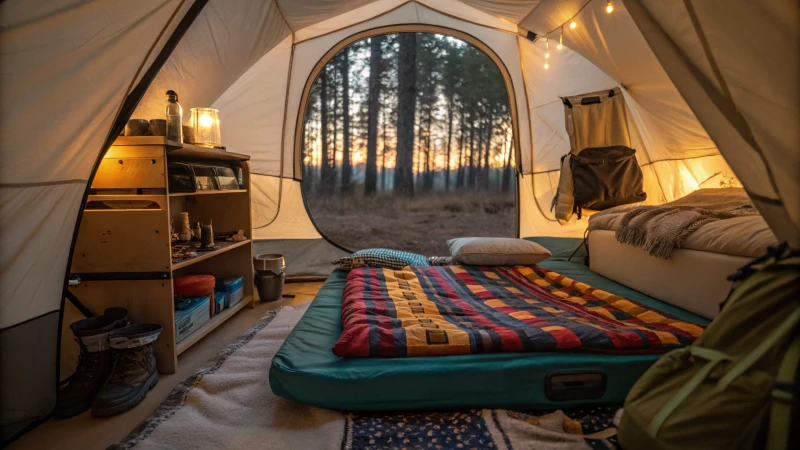
Lighting Enhancements
One evening, as I was stumbling around in my tent, I realized how much difference good lighting could make. So, I strung up some fairy lights and invested in a solar lantern. It was like bringing a touch of magic into the wilderness—a cozy glow that made every night special.
Storage Solutions
There was a trip where I couldn’t find my socks among the chaos of gear in my tent. That was the last straw! I got myself some hanging organizers and collapsible shelves. Now, everything has its place, and I can actually enjoy my time without tripping over my own stuff. These storage solutions5 keep essentials within easy reach and prevent clutter.
Comfort Enhancers
I’ll never forget that night on a thin sleeping mat, waking up stiff and grumpy. That’s when I upgraded to an inflatable mattress. Add a couple of fluffy pillows and soft blankets, and suddenly, my tent felt more like a snug little retreat than a rugged campsite.
Decorative Touches
Ever thought about making your tent as comfy as your living room? Once, I threw in a small rug and some cushions just for fun. It added such a personal touch, making it feel like a glamorous retreat6 rather than just another night under the stars.
| Feature | Description |
|---|---|
| Lighting | String lights, solar lanterns |
| Storage | Hanging organizers, collapsible shelves |
| Comfort | Inflatable mattresses, padded mats |
| Decoration | Rugs, throw cushions |
Weather Adaptations
I learned the hard way during a chilly, rainy weekend—my tent wasn’t prepared for the elements. Investing in thermal liners and rain flies turned out to be a game-changer. Now, no matter what Mother Nature throws at me, I stay warm and dry.
Entertainment Options
There was that rainy day when boredom was our only companion. That’s when I thought about bringing along portable speakers and even a makeshift projector. Now, every trip includes music and movies under the stars, turning good trips into great memories. Portable entertainment7 is now always on my packing list!
String lights are only for decoration, not functionality.False
String lights provide both ambiance and functional lighting inside tents.
Thermal liners improve tent insulation in cold weather.True
Thermal liners help maintain a warm interior by adding insulation.
How Do Different Tent Sizes Affect Your Event Costs?
Ever wondered how the size of a tent can impact your event budget? It’s more than just square footage—it’s about creating the perfect atmosphere without breaking the bank.
Different tent sizes impact costs through varying square footage requirements, rental fees per square foot, and the need for additional features. Larger tents typically incur higher costs due to increased material and labor expenses.

Factors Influencing Tent Rental Costs
When I first started organizing events, I quickly realized that choosing the right tent size was like picking the perfect pair of shoes—not just about fit but also about style and function.
-
Square Footage Needs: The bigger the tent, the more it costs. It’s simple math, really. I remember planning my sister’s wedding and underestimating the space we needed. Suddenly, we had to stretch our budget to accommodate a larger tent, teaching me firsthand that size truly matters.
-
Rental Fees Per Square Foot: Just like hotels, tent rental prices can vary widely. When I was renting a tent for a local fair, I discovered that some companies offer bulk discounts or off-peak pricing, which was a game-changer for my budget.
-
Additional Features: Adding extras like lighting or a dance floor can turn a plain tent into a magical venue. For my friend’s outdoor birthday bash, we splurged on fairy lights and a small stage, which added both ambiance and cost.
Tent Size Estimated Cost Additional Features Cost 20×50 ft $500 – $700 $200 (basic lighting) 30×50 ft $800 – $1,200 $300 (with flooring) 30×60 ft $1,200 – $1,800 $500 (stage & lighting) -
Transportation and Setup: I once hosted an event in the countryside, only to find out later that getting the tent there was nearly as costly as the tent itself! Remote locations often mean higher transport and setup fees.
Comparing Costs Based on Event Type
-
Banquet-Style Events: These tend to need more room per guest. I learned this when organizing a charity dinner—every inch counts when you want guests to feel comfortable and enjoy their meal.
-
Theater-Style Events: These are more space-efficient. For a community play I helped organize, we managed to fit more guests with fewer square feet per person compared to a banquet setup.
By considering these factors, you can make informed choices about tent rentals8, ensuring your event is memorable without unnecessary financial strain.
Larger tents always cost more than smaller ones.True
Bigger tents require more material and labor, increasing costs.
Tent rental fees are fixed regardless of season.False
Fees vary; discounts may apply during off-peak seasons.
Conclusion
For 150 guests, a 30×50-foot tent is ideal for banquet seating, while a 20×50-foot tent suffices for theater-style. Consider extra space for stages or dance floors.
-
Understanding banquet-style seating can help you visualize and plan the layout effectively. ↩
-
This link provides insights into how theater-style seating maximizes space efficiency. ↩
-
Find ideas for optimizing your tent layout during large group gatherings. ↩
-
Get inspired by activities perfect for camping with friends. ↩
-
Discover how to efficiently organize your camping tent using innovative storage solutions. ↩
-
Explore creative decoration ideas to transform your tent into a cozy and inviting space. ↩
-
Find exciting portable entertainment options to enhance your camping experience. ↩
-
Get insights into typical rental prices for various tent sizes to better plan your event budget. ↩


